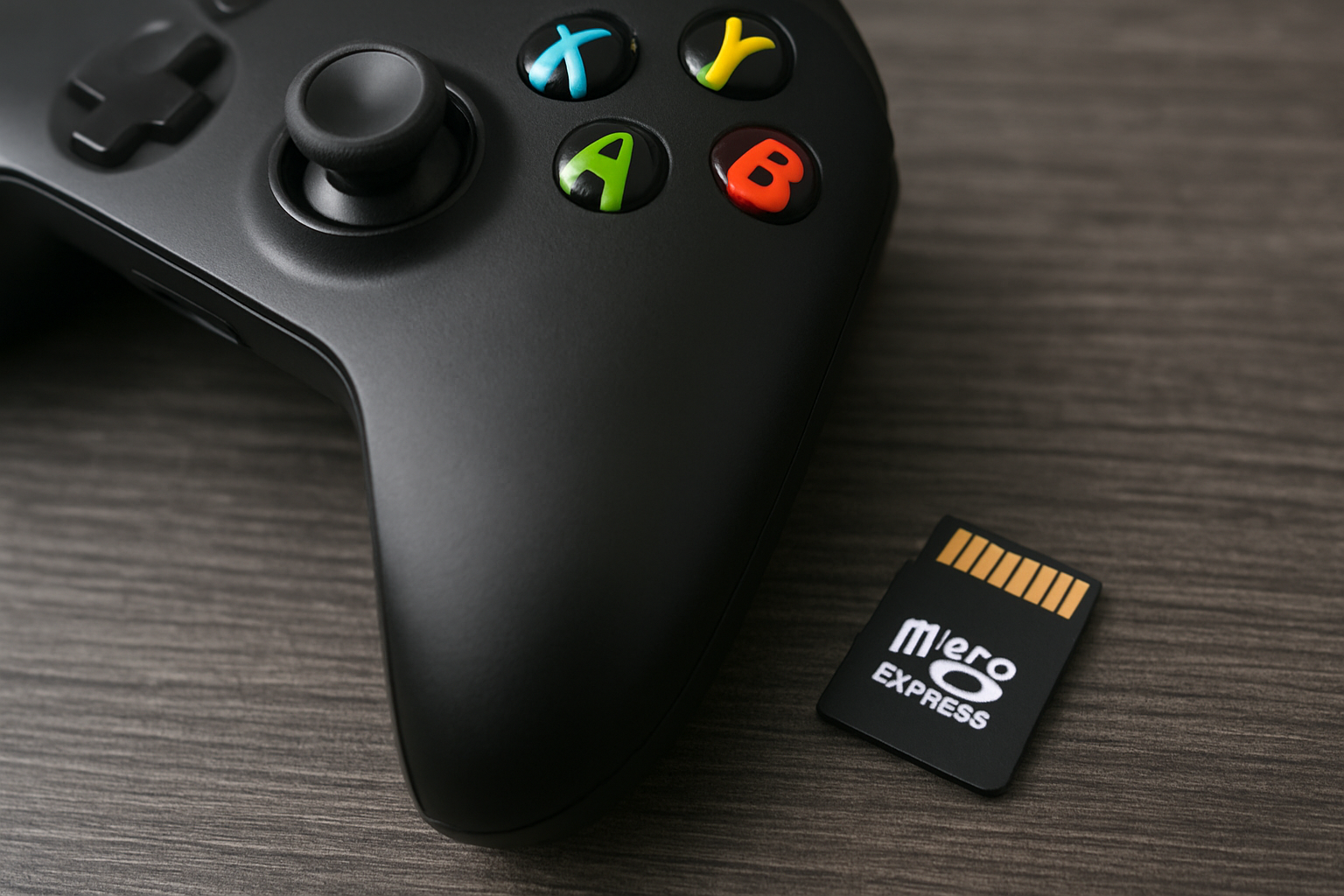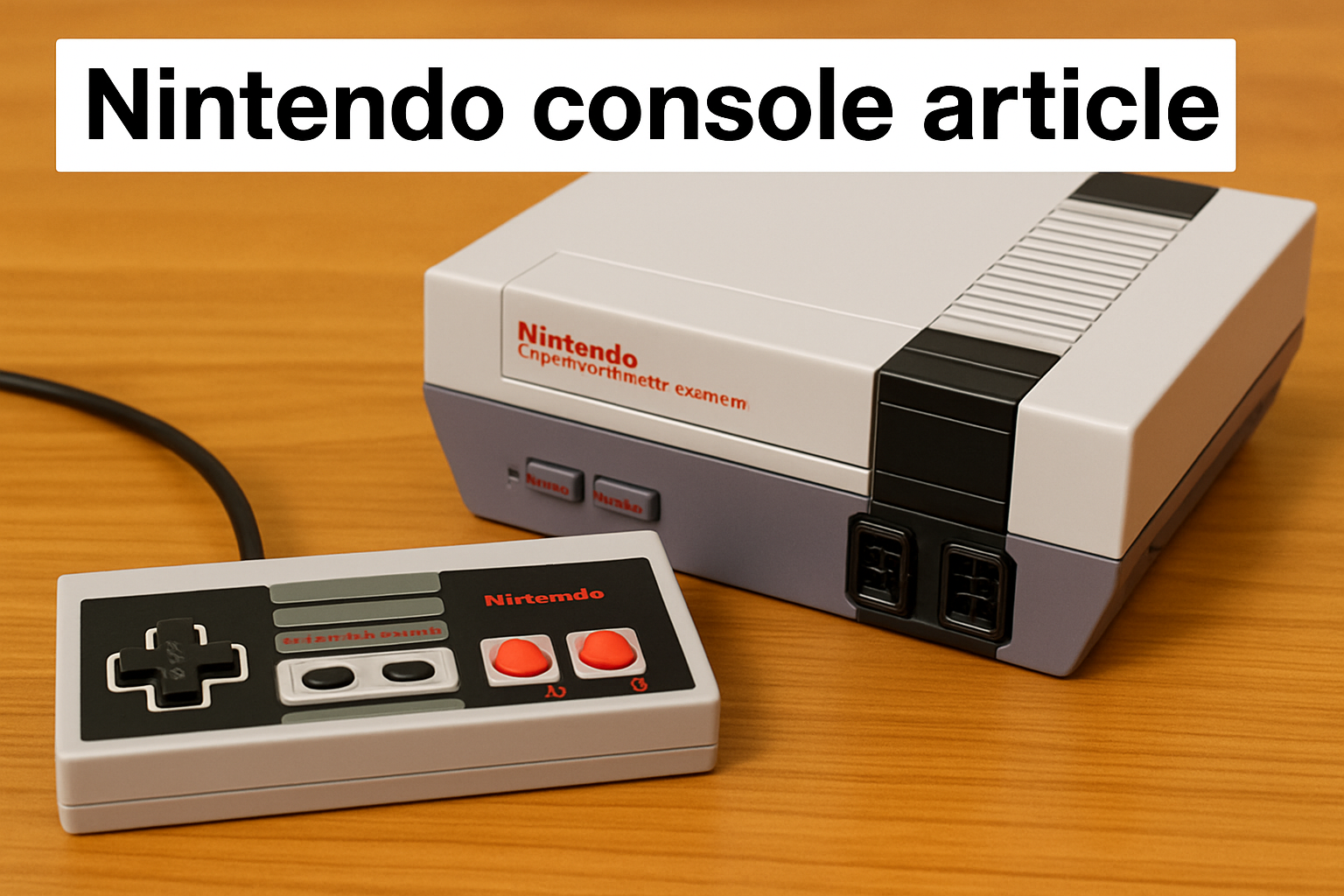Next-Generation Gaming Unleashed: The MicroSD Express Storage Revolution
- Jun 10, 2025
- 0

The latest advancements in Nintendo’s hardware have ignited a buzz among gamers and tech enthusiasts alike. With the arrival of the new console, storage has taken center stage in conversations about performance and gameplay versatility. The emphasis on upgraded capacity and faster read/write speeds has not only raised consumer expectations but also paved the way for a fresh wave of storage solutions designed exclusively for this generation. Enthusiasm is mounting as the industry sees increased collaboration between console makers and storage manufacturers, setting the stage for an era where enhanced gaming experiences are deeply interconnected with rapid data access and robust storage options.
Expanding Storage Capacities in the New Era
The new console features a substantial leap in onboard storage with a 256GB solid-state drive, which stands as a significant upgrade over previous iterations. Such a sizable increase in capacity not only supports a broader library of digital content but also addresses the challenge of accommodating increasingly large game files. This development means that modern games, along with future releases, will demand more substantial memory management, thereby driving gamers to consider storage expansion for their consoles. What makes this evolution particularly striking is the requirement for microSD Express cards, designed to safely and efficiently bridge the gap between the built-in memory and the massive file sizes anticipated. This shift in storage design underscores a move toward a seamless gaming experience where performance and capacity go hand in hand.
Tailored Card Compatibility and Technological Advancements
The new console has redefined its storage approach by limiting external memory compatibility to a specific technology: the microSD Express card. This targeted approach ensures that users are provided with a solution "that addresses the requirements for rapid data transmission" transfer and efficient content management. Unlike previous models that accepted a broader range of microSD cards, this system prioritizes performance by leveraging the latest developments in semiconductor technology. The adoption of microSD Express is not only about increasing available space but also about delivering unprecedented read and write speeds, which are vital for enhancing gameplay fluidity and reducing load times. This specificity further cements the console’s commitment to future-proofing its design, ensuring that gamers can enjoy smoother experiences even as game sizes escalate.
Performance Metrics and Speed Enhancements in Storage
Central to this storage revolution are the performance enhancements afforded by microSD Express technology. These cards offer read speeds up to 880MB/s and write speeds reaching 650MB/s, with sustained speeds further elevating the performance compared to legacy storage solutions. Such figures are a stark contrast to earlier options such as certain Ultra and Extreme models that provided much lower throughput. The advanced speeds help eliminate the bottlenecks that may have affected game installations and load times in previous generations. By pushing the boundaries of data processing capabilities, the microSD Express technology not only bolsters the gaming experience but also proves integral in managing larger, more complex game installations. In this way, gamers are poised to benefit from an atmosphere of rapid, efficient performance that has long been a goal for console manufacturers and accessory providers.
SanDisk’s Role in Shaping the New Storage Landscape

SanDisk has emerged as a frontrunner in this evolving storage scenario, offering microSD Express cards that are finely tuned for the new console’s requirements. With offerings available in 128GB and 256GB capacities, SanDisk’s cards bring competitive pricing and robust performance to the table. These cards, designed with an eye on speed and efficiency, mark a departure from previous iterations in terms of technological capability. The rapid read and write speeds they offer ensure that even the most demanding games can run smoothly, providing gamers with an uncompromised experience. Although Nintendo-themed versions have not yet been fully detailed online, expectations are high based on historical pricing trends wherein branded cards have traditionally garnered a premium. As industry trends shift, SanDisk’s approach illustrates a broader move towards ensuring that storage solutions are as integral to the gaming experience as the console itself.
Innovations in Lexar MicroSD Express Solutions
Lexar has positioned itself as a key player in the race to provide high-capacity storage solutions specifically tailored for next-generation gaming consoles. Their portfolio includes models offering 256GB, 512GB, and even 1TB capacities, marking a significant stride for users seeking flexibility and longevity in their storage options. Lexar’s microSD Express cards are engineered for blazing-fast data transfer, with reported speeds of up to 900MB/s for reads and 600MB/s for writes — figures that underscore the performance differences compared to traditional options. This ability to meet a diverse range of requirements and financial considerations of gamers makes Lexar a valuable alternative in a market where speed and capacity go hand in hand. Their proactive alignment with the requirements of the new console ensures that gamers are not left behind as technological demands continue to ascend.
Samsung’s Nintendo-Themed Storage Solutions
Samsung, a household name in consumer electronics, has introduced its own microSD Express offering that carries a Nintendo-licensed design. This move exemplifies the blending of iconic branding with high-performance technology tailored for the latest console. The 256GB model, retailing competitively, promises sequential read speeds up to 800MB/s, positioning it as a viable and An affordable alternative for gamers aiming to enhance their setup their storage. The surprising price point, contrasted with the typically premium pricing of branded microSD cards, hints at an intention to provide mainstream accessibility without compromising on performance. Samsung's approach ensures that gamers gain access to storage devices that do not just meet but exceed expectations, effectively supporting the console’s operational demands in an era defined by rapid digital content expansion.
GameStop’s Entry into the Accessory Ecosystem
Capitalizing on the enthusiasm surrounding the new console, GameStop has entered the accessory arena with its own line of microSD Express cards and related peripherals. These cards, available in 256GB, 512GB, and 1TB options, are designed with competitive pricing strategies in mind. However, fluctuations in pricing have raised questions among consumers, particularly when comparing them with offerings from established manufacturers like SanDisk and Lexar. The inclusion of these GameStop-branded storage options is complemented by a suite of additional accessories, including carrying cases, controller grips, and a novel USB-C hub equipped with video output capabilities. While the third-party dock provides a modest video resolution, it embodies GameStop's commitment to expanding the accessory catalog surrounding the console. Such diversified offerings highlight a market dynamic that rewards innovation and tailored accessory bundles for the gaming community.
Inventory Dynamics and Consumer Accessibility
As the microSD Express cards gain prominence in light of the new console's launch, inventory fluctuations and supply chain challenges have become a focal point for gamers. Several models from major brands have experienced rapid sellouts, signaling a robust demand that has caught both manufacturers and retailers off guard. This phenomenon is particularly evident in spawned listings and preorders, where some cards have even been listed as temporarily out of stock. The anticipation surrounding themed versions, such as those inspired by popular game franchises, has further intensified the need for timely purchases. The delicate balance between supply and demand is a testament to the console's potential impact on the storage accessory market, ensuring that buyers must remain alert and proactive in securing the products that will Empower them to leverage the entire spectrum of capabilities offered by their new gameplay systems.
Exploring the Impact on Next-Generation Gaming
The integration of specialized microSD Express cards into the new console ecosystem is poised to have far-reaching implications on the overall gaming experience. As file sizes continue to grow and digital content becomes increasingly demanding, this advanced storage solution emerges as a critical contributor to optimal system performance. Gamers will find that the upgraded storage capacity and heightened transfer speeds enable smoother gameplay, reduced loading intervals, and more efficient management of extensive game libraries. This enhancement further reinforces the idea that storage is not an auxiliary feature but a pivotal component in defining the performance and longevity of a gaming console. In embracing these modern storage technologies, the industry signals a renewed focus on building systems capable of handling the digital demands of today’s complex and immersive gaming environments.
Market Trends Shaping Storage and Gaming Accessories
The introduction of microSD Express cards in the gaming market reflects a broader trend towards specialization and precision in accessory design. Industry leaders are now recognizing that storage solutions and peripheral devices must evolve in parallel with game development technologies. The specificity in card compatibility and the emphasis on performance metrics illustrate a keen awareness of the shifting landscape in digital entertainment. Moreover, the collaboration between console makers and accessory manufacturers has spawned a dynamic environment where bundled offers and prelaunch campaigns are becoming increasingly prevalent. As preorders for the next-generation console approach, consumers are not only challenged to secure their devices but also to invest in the complementary accessories that will round out their gaming experience. This synergy between console hardware and storage add-ons mirrors a moment of rapid innovation and market adaptation.
Symphony of Accessories in the Evolving Ecosystem
The realm of accessories accompanying this new console is witnessing a rich blend of functionality and design aesthetic. Beyond just microSD Express cards, third-party retailers have introduced a range of complementary products designed to enhance user experience. These offerings include dedicated carrying cases, ergonomically designed grips, and even specialized cables that ensure connectivity remains reliable across devices. Each accessory is designed to work seamlessly with the console while adding its own distinctive touch to the overall gaming setup. Notably, the accessory bundles not only reflect a keen understanding of consumer needs but also underscore the importance of a unified ecosystem. As brands collaborate to create these integrated offerings, gamers are presented with an opportunity to tailor their experience, balancing performance, aesthetics, and functionality in a manner that truly resonates with the evolving demands of modern digital entertainment.